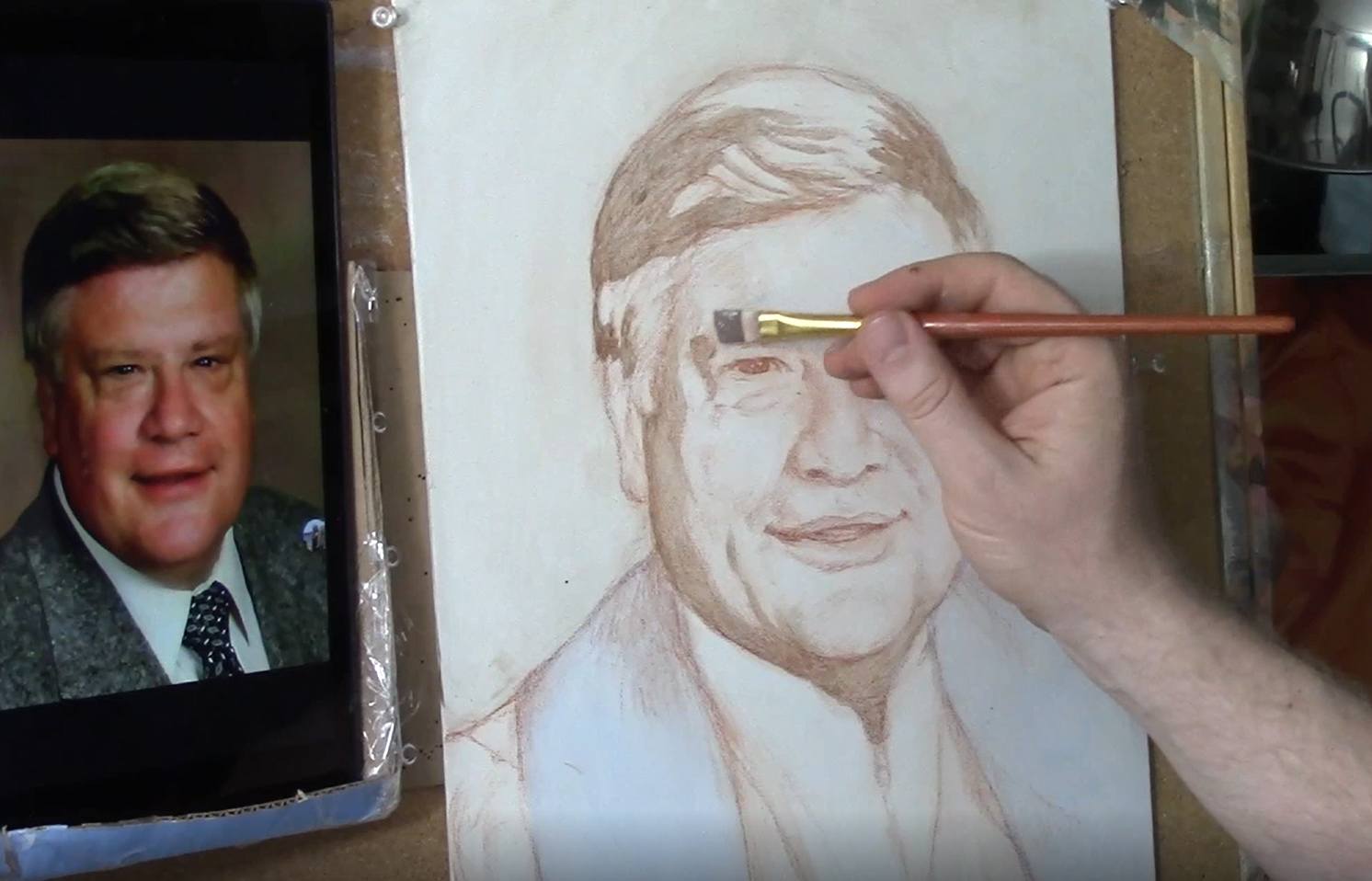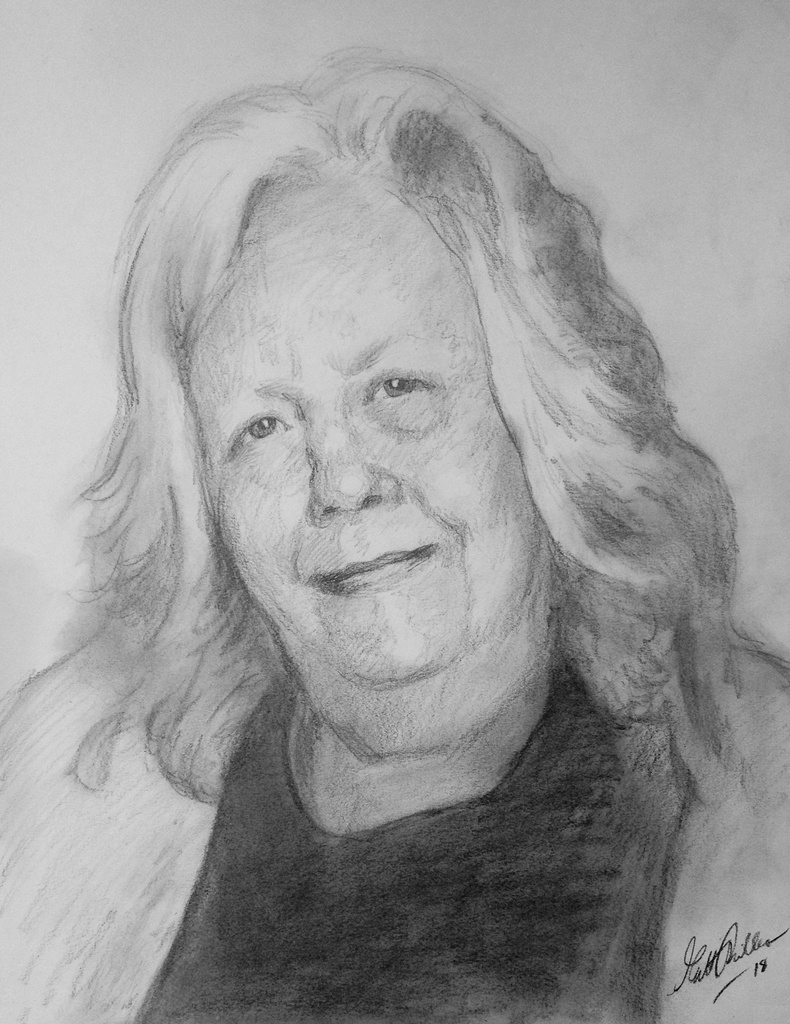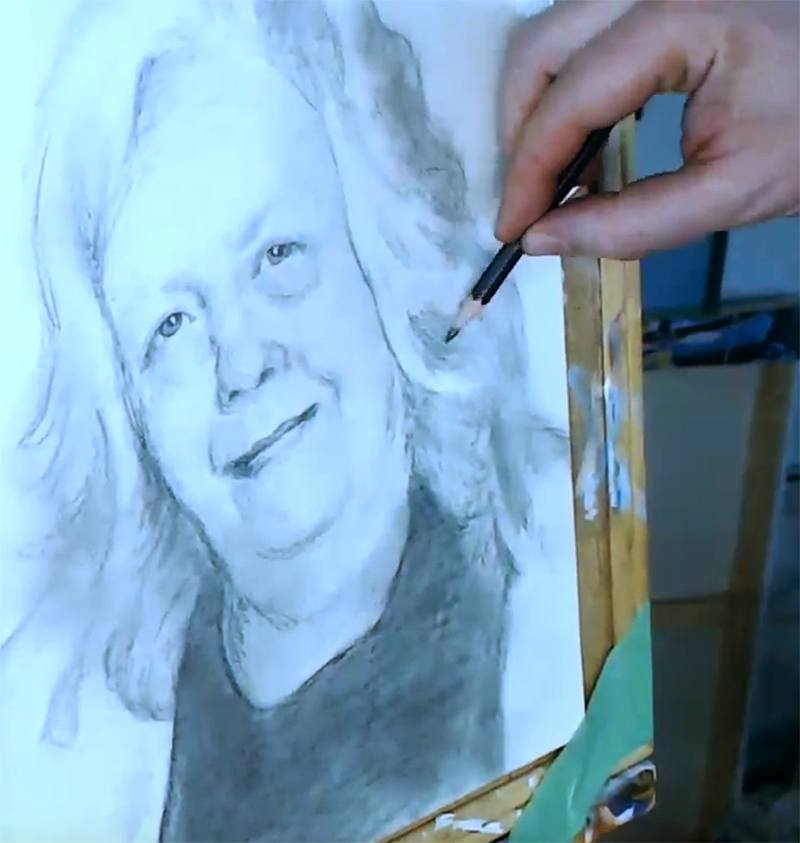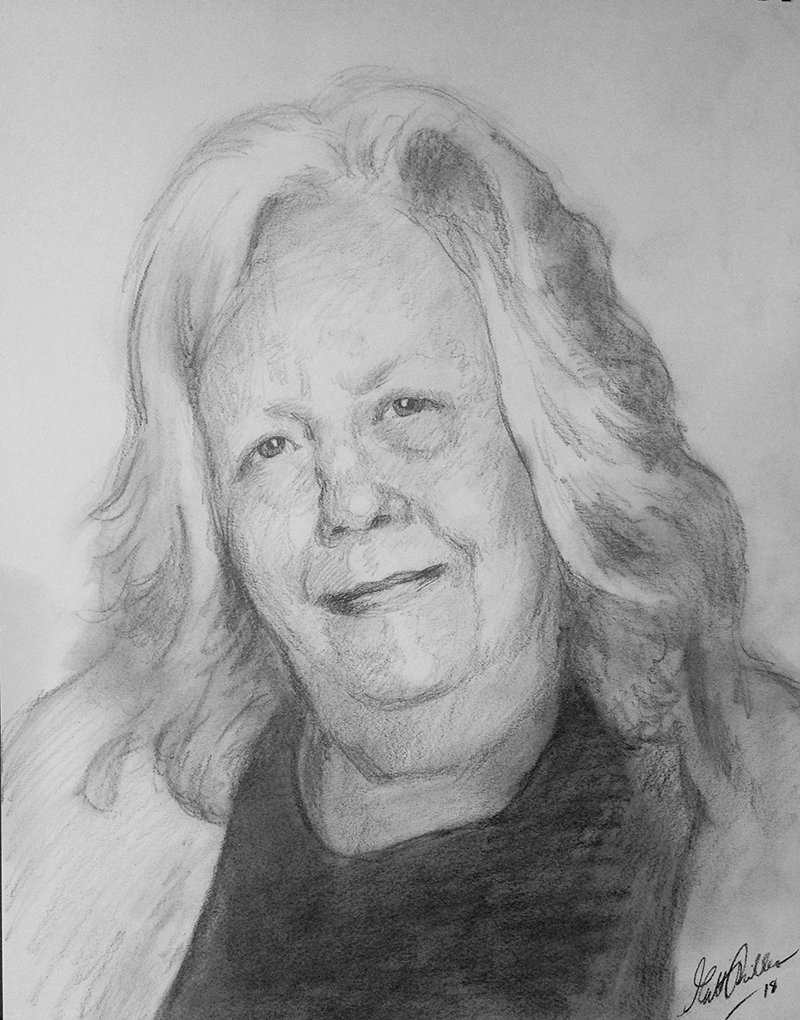Archive Monthly Archives: July 2018

Step-by-Step Process of a Memoriam Portrait (Video Lesson)
Sometimes as portrait artists, we are called to capture the memory of a lost loved one. It’s a very special thing, a privilege that we given, to be able to do that for someone.
I don’t take it lightly.
Recently, I just finished up a commissioned portrait for a friend, whose pastor has recently passed away. This is an 11″ x 14″ acrylic on canvas. I want to show you the entire process, but I’m going to start in this post with just the sketch and first couple layers. Then, we’ll just add on with more steps to this same post.
Many of my blog readers prefer more video content rather than written, so that’s how I’m going to do it here.
Step 1: Blocking in the First Shadows and Tones
Step 2: Filling in the Initial Skin Tone Glaze
Step 3: Integrating the Background and Hair Color
Step 4: How to Paint the Hair
Step 5: How to Paint Nuances in the Skin Tones
Would you like to know when I post another video lesson on this portrait? Click the button below to get my art tips and keep learning!
Learn How to Paint Acrylic Portraits With My Free Mini-Video Course!
Hope you enjoyed this acrylic portrait painting tutorial. As always, let me know how I can help you with your portraits or if you have a question. Leave me a comment below!
Be blessed in your painting,

P.S. Did you find this post helpful or encouraging? If so, send it on ahead! Let others know with the share buttons below. I’d love to hear your comments. Thank you so much! Also, do you have a question on acrylic portrait painting you’d like answered? Let me know, and I’d be happy to help!

How Freehand Sketching Can Improve Your Painting
What is the best way to get better as an acrylic portrait artist?
Is it by learning a new skin tone recipe? Is it by getting a new glazing medium? Or is it by watching a bunch of time-lapse videos?
All of these things can help, but what will get you the fastest results is to go to the foundation: accurate drawing. Most painters spent months or even years doing drawings before ever picking up a paintbrush. There’s just something about drawing that works wonders for your painting skills.
I think part of it is that it bypasses the other concerns of handling paint: mixing colors, brush technique, drying times, etc. You only have a few simple tools: your pencils, paper, and an eraser. And you work in monochromatic so it forces you to think only about your form and shading.

Portrait artist Matt Philleo sketching from a photo
So, why do I have a drawing tutorial here in Realistic Acrylic Portrait School? Because drawing is a fundamental skill, and it will drastically improve your painting. It won’t help to learn advanced skin tone and shading skills unless you know how to see three-dimensional forms and translate them to a two-dimensional surface. You want to be able to see the likeness of the person you’re trying to paint and accurately capture that. Drawing will do this for you faster than anything.
One of my neighbor’s friends’ sister died recently, and she asked me if I could draw a sketch of her to commemorate her. I agreed, and when I had some time in my crazy studio schedule, I got out my paper, and pencils and started sketching.
I set up the photo on my Kindle Fire, right next to my paper and started working. Now this drawing is definitely not fancy since it’s just a sketch done in under an hour, but I try to draw freehand often, to keep my skills sharp. I’m still learning, and trying to improve my skills.

Here is a a free training session showing how I drew the 11″ x 14″ pencil portrait, from start to finish, in about 45-50 minutes. In this video, you will learn:
- How to decide how big to make the face and get the initial proportions
- How to accurately position draw the shape of the features by working loosely at first and getting specific later
- Techniques for shading in the face to give it dimension
- Why it’s important not to blend too much
- And more!
Have a blessed day,

P.S. Did you find this post helpful or encouraging? If so, send it on ahead! Let others know with the share buttons below. I’d love to hear your comments. Thank you so much! Also, do you have a question on acrylic portrait painting you’d like answered? Let me know, and I’d be happy to help!
